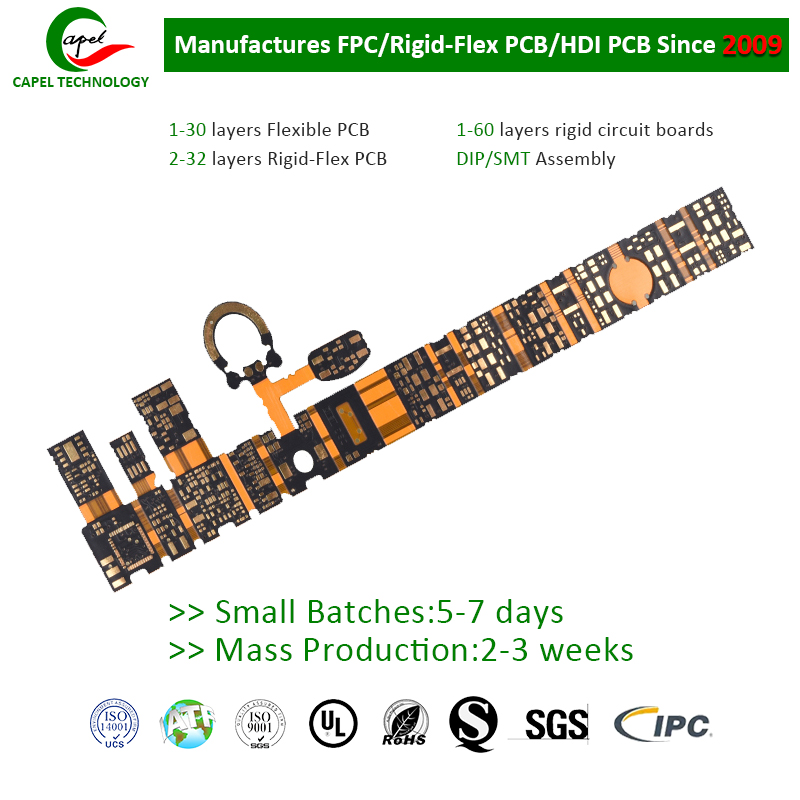In this blog, we will explore the methods and calculations required to determine the thermal performance of rigid-flex PCB designs.
When designing a printed circuit board (PCB), one of the key factors engineers need to consider is its thermal performance. With the rapid advancement of technology and the continued demand for more compact and powerful electronic devices, heat dissipation from PCBs has become a major challenge. This is especially true for rigid-flex PCB designs that combine the advantages of rigid and flexible circuit boards.
Thermal performance plays a critical role in ensuring the reliability and longevity of electronic devices. Excessive heat buildup can lead to a variety of issues, such as component failure, performance degradation, and even safety hazards. Therefore, it is critical to evaluate and optimize the thermal performance of PCBs during the design phase.
Here are some key steps for calculating the thermal performance of rigid-flex PCB designs:
1. Determine thermal properties: First, it is critical to gather the necessary information about the thermal conductivity and specific heat capacity of the materials used in rigid-flex PCB designs. This includes conductive layers, insulating layers, and any additional heat sinks or vias. These characteristics determine the PCB’s heat dissipation capabilities.
2. Thermal Resistance Calculation: The next step involves calculating the thermal resistance of different layers and interfaces in a rigid-flex PCB design. Thermal resistance is a measure of how efficiently a material or interface conducts heat. It is expressed in units of ºC/W (Celsius per Watt). The lower the thermal resistance, the better the heat transfer.
3. Determine thermal paths: Determine critical thermal paths in rigid-flex PCB designs. These are the paths along which the heat generated travels. It is important to consider all heat-generating components such as ICs, power devices, and any other heat-generating components. Analyze the heat flow path from the heat source to the surrounding environment and evaluate the impact of different materials and layers on this path.
4. Thermal simulation and analysis: Use thermal analysis software to simulate the heat dissipation in rigid-flex board design. Several software tools, such as ANSYS Icepak, SOLIDWORKS Flow Simulation or Mentor Graphics FloTHERM, provide advanced capabilities for accurately modeling and predicting thermal behavior. These simulations can help identify potential hot spots, evaluate various design options and optimize thermal performance.
5. Heat sink optimization: If needed, a heat sink can be included to enhance the thermal performance of the rigid-flex PCB design. Heat sinks increase the surface area available for heat dissipation and improve overall heat transfer. Based on the simulation results, select an appropriate heat sink design, taking into account factors such as size, material, and layout.
6. Evaluate alternative materials: Evaluate the impact of different material choices on the thermal performance of rigid-flex PCB designs. Some materials conduct heat better than others and can significantly enhance heat dissipation capabilities. Consider options such as ceramic substrates or thermally conductive PCB materials, which can provide better thermal performance.
7. Thermal testing and verification: After the design and simulation are completed, it is critical to test and verify the thermal performance of the actual rigid-flex PCB prototype. Use a thermal camera or thermocouples to take temperature measurements at key points. Compare measurements to simulation predictions and iterate the design if necessary.
In summary, calculating the thermal performance of rigid-flex PCB designs is a complex task that requires careful consideration of material properties, thermal resistance, and thermal paths. By following the above steps and leveraging advanced simulation software, engineers can optimize designs to achieve efficient heat dissipation and improve the overall reliability and performance of electronic devices.
Remember, thermal management is an important aspect of PCB design, and neglecting it can have serious consequences. By prioritizing thermal performance calculations and using appropriate techniques, engineers can ensure the longevity and functionality of electronic devices, even in demanding applications.
Post time: Sep-20-2023
Back







